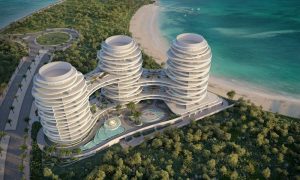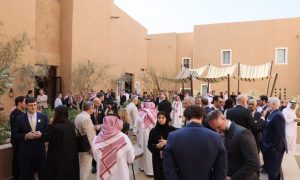Bahrain Market View for Q1 2012
Mike Williams, senior director of Research and Consultancy at CBRE Bahrain, gives us his views on the real estate market there

The major market sectors indicated on the rent cycle chart are all now in the same quadrant of slowing decline, indicating the perception that Bahrain’s real estate sector is at, or near, the ‘bottom of the market’.
Landlords are increasingly indicating that they would rather leave properties vacant than accept lower rental rates, although this behaviour is not consistent throughout the market, and is largely dependent on whether properties are owned with or without leverage.
 OFFICE MARKET
OFFICE MARKET
New demand for local Class A office space remains exceptionally weak in the face of growing supply. Much of the new supply is in the form of new office towers in Diplomatic Area and Seef District on which construction had commenced just as the Bahraini market entered a period of reducing demand driven by global market conditions and the programme of social unrest in the Kingdom.
The new office space in Diplomatic Area in particular is likely to be most problematic given that the area is deeply unpopular with tenants who are unable to access the area, circulate or park. The failure of the planning system to organise or rationalise the way in which Diplomatic Area functions has been key to the area’s decline as the Kingdom’s Central Business District.
Seef District may yet follow this path as built density to date is somewhat at variance from plans originally drawn up for the area. However, the market slowdown has saved this district in the short to medium term and development in Seef has now slowed to a trickle. Existing office buildings are functioning with moderate level occupancies and vacant land plots enabling most buildings to satisfy the majority of their staff and visitor parking requirements.
The Class B office space, which previously comprised a mix of older properties, those in lower-profile locations or apartments in or close to prime office areas, has experienced mixed fortunes based on a range of factors.
Older, poorly maintained properties are moving into Class C category rental rates, office buildings in less prominent locations are still broadly popular as they continue to serve their local market, while apartments used as office space are largely returning to residential use. They were always poor options in terms of space efficiency and parking ratios, and the sheer volume of available local Class A space that has either been fitted or part-fitted means that former apartment users are now able to move into much more efficient and practical spaces for roughly the same as they were paying previously.
Traffic in general has eased in the main office districts although the programme of disruption employed by some demonstrators means that on occasion huge tailbacks occur on major highways during peak periods. This disruption is easy to achieve due to the high concentration of offices in specific locations. If the planning system in particular addressed this issue by encouraging a much wider distribution of office centres throughout the Kingdom, disruption would be less easy and would have a diminished impact.
Local Class A Office Space Lease Rates – Q1 2008 to Q1 2012
Class B Office Space Lease Rates – Q1 2008 to Q1 2012
Retail Sector
The retail mall sector in Bahrain has become somewhat polarised with huge variations in performance between those that are doing well and those that are not.
At one end of the spectrum, City Centre and Seef Mall have high occupancy and strong rental rates, with Moda Mall following closely behind. Moda Mall is always difficult to ‘read’ in terms of performance as it relies on a combination of low footfall/high spend which means that it always appears to be somewhat underpopulated by shoppers and the ‘bag count’ is low. Moda Mall has also recently announced a US$13 million refurbishment programme.
At the bottom of the performance scale we have Sitra Mall, the performance of which can only be described as ‘catastrophic’. Failure to locate the anchor tenants in locations that have any impact on the rest of the mall, poor access, social unrest in close proximity to the mall and outlets that fail to meet the needs of the mostly low-income villages nearby are all factors in this mall’s sad decline.
RESIDENTIAL SECTOR
Although there has been much press speculation regarding the needs of the low-income sector, there has been very little movement from the private sector in addressing this issue. The problems of high land prices, the lack of infrastructure in remote areas and high building costs mean that it remains difficult to meet the price-sensitivity of the market.
Low-income social housing for owner-occupation is essentially a problem to be addressed by the Government while the most successful private sector housing model at present remains low to middle-income apartment housing for rent.
Relatively small apartment buildings of ground plus four to six floors are emerging in various districts of Bahrain and are being let quickly, sometimes off-plan. The tenants are a mix of corporate entities who require worker accommodation or low to middle-income Bahraini couples usually starting their first home.
Finishes are basic and rents for two bedroom properties can start as low as BD150 to BD180 per month, largely depending on location. These are effectively only a temporary solution to the pressing housing needs of this sector of Bahrain society, but a solution nevertheless.
The realities of life, where on a global basis housing ownership is increasingly becoming an unattainable dream for those in their twenties, are starting to sink in. It should be remembered that even in relatively wealthy western economies such as the UK, the average first time property buyer is 37 years old. The Bahrain Government provides subsidised loans for Bahraini households earning up to BD1,200 per month but there is such a strong culture of personal debt in Bahrain that much of the population that falls into this category is unable to access such loans due to the high levels of debt already taken.
Several middle-income housing projects (erroneously advertised as ‘affordable housing’) have been launched in Bahrain in the last three months and sales (reservations) have reportedly been brisk to date. However, analysis reveals that some of these projects are effectively being sold at a loss, or at best, cost price, in order to stimulate the market and raise the profile of the ongoing masterplanned projects of which they are merely a very early phase.
In the context of current market conditions and the need to get the ball rolling on the larger projects, this approach is entirely logical, albeit unsustainable.
In the current socio-political climate, sales to expatriates have naturally dwindled to virtually nothing as employment risks and the long term future of Bahrain remain somewhat uncertain. Nevertheless, sales in projects or properties away from the more troubled areas are still taking place albeit at rates and prices well below those of four or five years ago.
Standard 2 Bed Apartment Rental Rates, Juffair – Q1 2008 to Q1 2012
Standard 3 Bed Compound Villa Rates – Q1 2008 to Q1 2012
Compound Market
The compound sector, continues to be affected by the downturn in economic conditions which has led to many high-income expatriates leaving the Kingdom altogether. This is particularly the case for expatriates formerly employed in the banking sector which has suffered a major rationalisation process over the last four years, although it should be pointed out that this is a global phenomenon, and not restricted to Bahrain.
Rental rates in the areas most affected by local unrest have dropped back to 2005 or 2006 levels while rates in emerging areas such as Hamala have continued to rise, albeit moderated by the sheer volume of new stock in this area.
Occupancy levels are also extremely variable with some compounds in the Saar and Budaiya areas reaching as low as 30% occupancy, while Hamala compounds typically enjoy occupancy levels closer to 80% or 90%. In short, the compound market is undergoing a period of change as locational dynamics come to the fore and demand switches from one area to another.





























